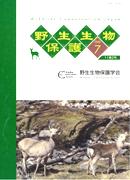11 巻, 2 号
選択された号の論文の8件中1~8を表示しています
- |<
- <
- 1
- >
- >|
原著
-
原稿種別: 原著
2008 年 11 巻 2 号 p. 1-5
発行日: 2008/07/31
公開日: 2017/10/03
PDF形式でダウンロード (528K) -
原稿種別: 原著
2008 年 11 巻 2 号 p. 7-10
発行日: 2008/07/31
公開日: 2017/10/03
PDF形式でダウンロード (621K) -
原稿種別: 原著
2008 年 11 巻 2 号 p. 11-18
発行日: 2008/07/31
公開日: 2017/10/03
PDF形式でダウンロード (954K) -
原稿種別: 原著
2008 年 11 巻 2 号 p. 19-28
発行日: 2008/07/31
公開日: 2017/10/03
PDF形式でダウンロード (1171K) -
原稿種別: 原著
2008 年 11 巻 2 号 p. 29-37
発行日: 2008/07/31
公開日: 2017/10/03
PDF形式でダウンロード (1000K) -
原稿種別: 原著
2008 年 11 巻 2 号 p. 39-44
発行日: 2008/07/31
公開日: 2017/10/03
PDF形式でダウンロード (702K) -
原稿種別: 原著
2008 年 11 巻 2 号 p. 45-57
発行日: 2008/07/31
公開日: 2017/10/03
PDF形式でダウンロード (1303K) -
原稿種別: 原著
2008 年 11 巻 2 号 p. 59-64
発行日: 2008/07/31
公開日: 2017/10/03
PDF形式でダウンロード (637K)
- |<
- <
- 1
- >
- >|
